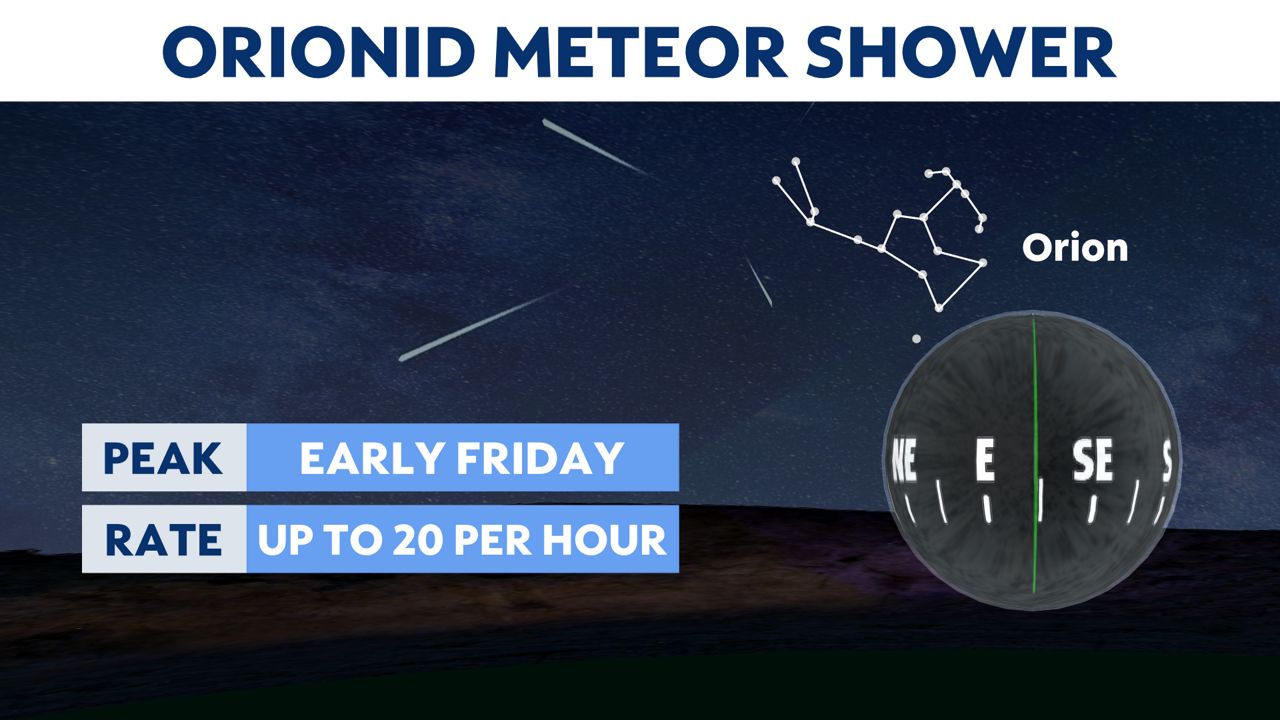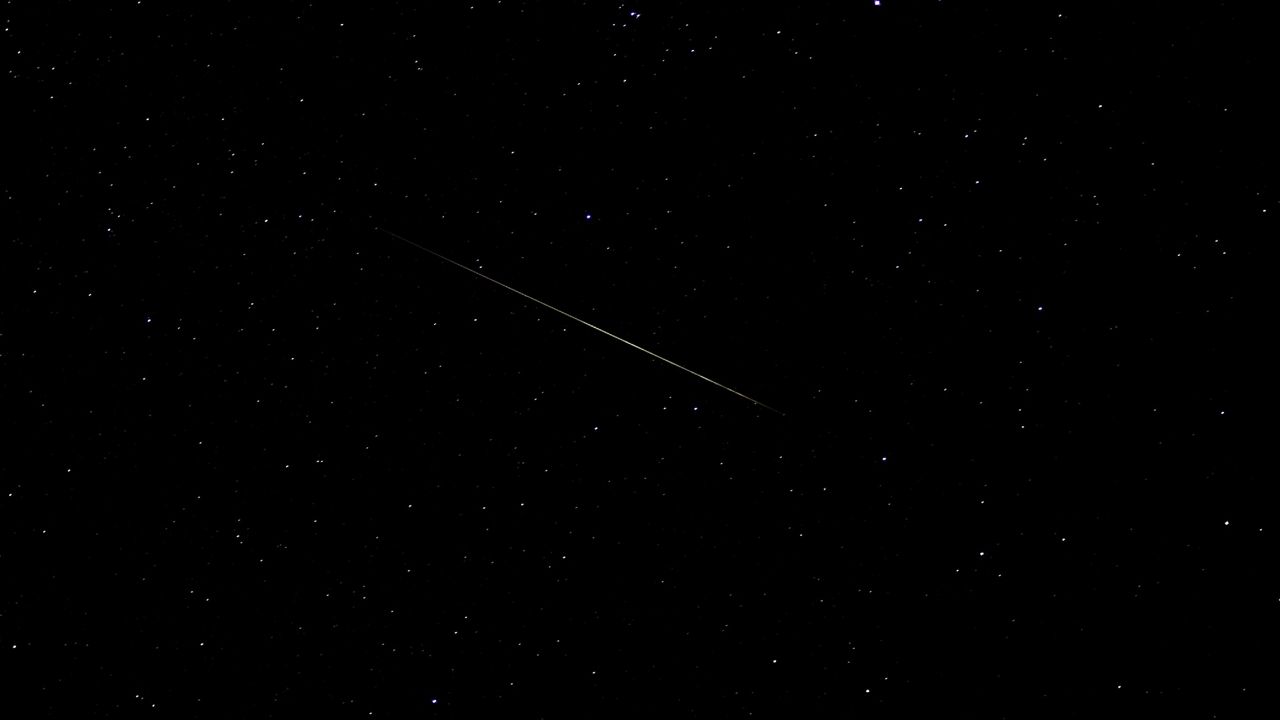The peak of the Orionid meteor shower is happening this week, but you’ll have to up pretty early to have the best viewing.
The Earth passes through the dust and debris of Halley’s Comet twice each year. The one in the fall gives us the Orionid meteor shower each October.
The meteors look like they originate from the constellation Orion. That so-called radiant will be highest in the sky in the few hours before dawn. It’ll be in the eastern to southeastern sky.
The Orionids will appear more active when the radiant is highest, since more of that region of the sky will be up and visible. Meteors can appear anywhere in the sky, though, not just near the radiant.
This isn’t an especially active meteor shower. You might see up to 20 meteors per hour under ideal conditions, but most will catch far fewer than that.
To maximize your chances, go somewhere with minimal light pollution. Let your eyes adjust to the darkness for at least 15 minutes–that means no taking glances at your phone. The more sky in your vision, the better, so lay back and take in the view... just try to not doze off!

The moon won’t be a problem, but you’ll need to know if clouds will be–check your local forecast here.
Wondering what else is in the night sky the rest of the year? Plenty! Here’s our 2022 celestial calendar.
Our team of meteorologists dives deep into the science of weather and breaks down timely weather data and information. To view more weather and climate stories, check out our weather blogs section.



